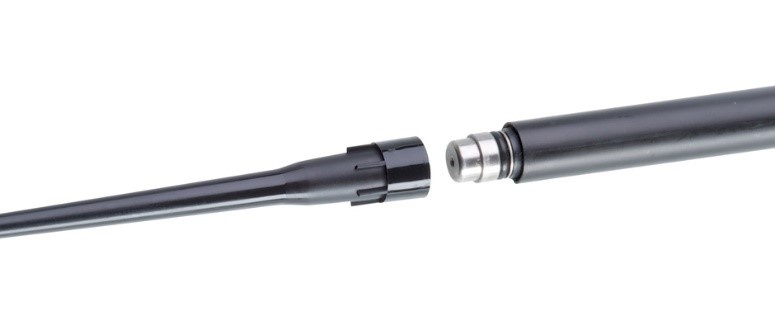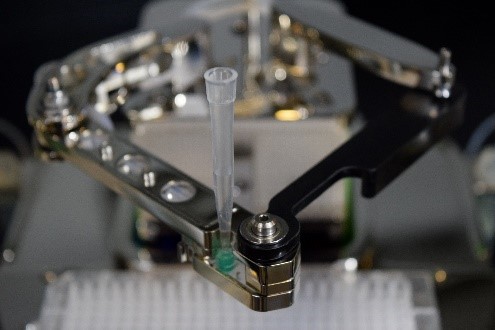1. Precision at Sub-µL Volumes with Patented Microfluidic Technology
Automated liquid handling platforms have revolutionized sample preparation, facilitating reproducible science by eliminating errors associated with manual pipetting. Further, researchers can now spend their time making intellectual contributions, such as designing experiments or analyzing data instead of laboriously pipetting into microplates. As volumes used in genomics research are decreasing due to innovative new technologies that allow for analysis even with picogram quantities of sample input, it is becoming clear that traditional air displacement pipetting is no longer an optimal solution for every step in a given genetic analysis application. The MANTIS® Liquid Dispenser performs liquid transfers that you can trust at sub-microliter volumes like 0.1 μL and 0.5 μL (100 nL and 500 nL). By adding a MANTIS to your Hamilton, Tecan, Beckman, or other traditional liquid handling platform, you can continue to generate reliable data at the forefront of translational research.

2. Save on Tips with a Consumable-Free Alternative
When working with samples, traditional liquid handlers provide most, if not all, of the necessary requirements. It is important to understand as a researcher, however, that these instruments are designed for sample preparation, not necessarily reagent addition. When adding precious reagents to your assay plate, there is no need to waste funding on expensive automation tips. With the MANTIS, a consumable-free alternative to traditional liquid handling, you can decrease your cost per sample one plate at a time!

3. Conserve Precious Reagents by Minimizing Dead Volume
Reagents for genomics research can be cost prohibitive, constraining the number of samples that can be analyzed in a given study. The MANTIS, with a 6 µL dead volume, offers the most cost-effective option for reagent dispensing on the market. In single-cell RNA-sequencing workflows, for instance, purchasing a MANTIS can pay for itself in just a few months!

4. Join the Movement - Assay Miniaturization
At first, I was surprised to hear how often researchers do not follow manufacturer recommended protocols in genomics applications. For instance, users of the MANTIS have shown that they can create sufficient cDNA through the use of ¼ reaction volumes in reverse transcription steps of RNA-sequencing studies. More and more researchers are taking advantage of this trend, and the MANTIS facilitates assay miniaturization by providing laboratories with a platform that reliably dispenses low volumes. Click here to see the data.

5. Run More Samples and Generate More Meaningful Data
When asked about their cost savings due to dead volume reduction, assay miniaturization, and a consumable-free instrument, MANTIS users often indicate that they reallocate the funding to run more samples, leading to more powerful genetic analysis. By supplementing your traditional liquid handling platform with the MANTIS, you can increase the reproducibility and quality of your data as well as the throughput and efficiency of your lab.
